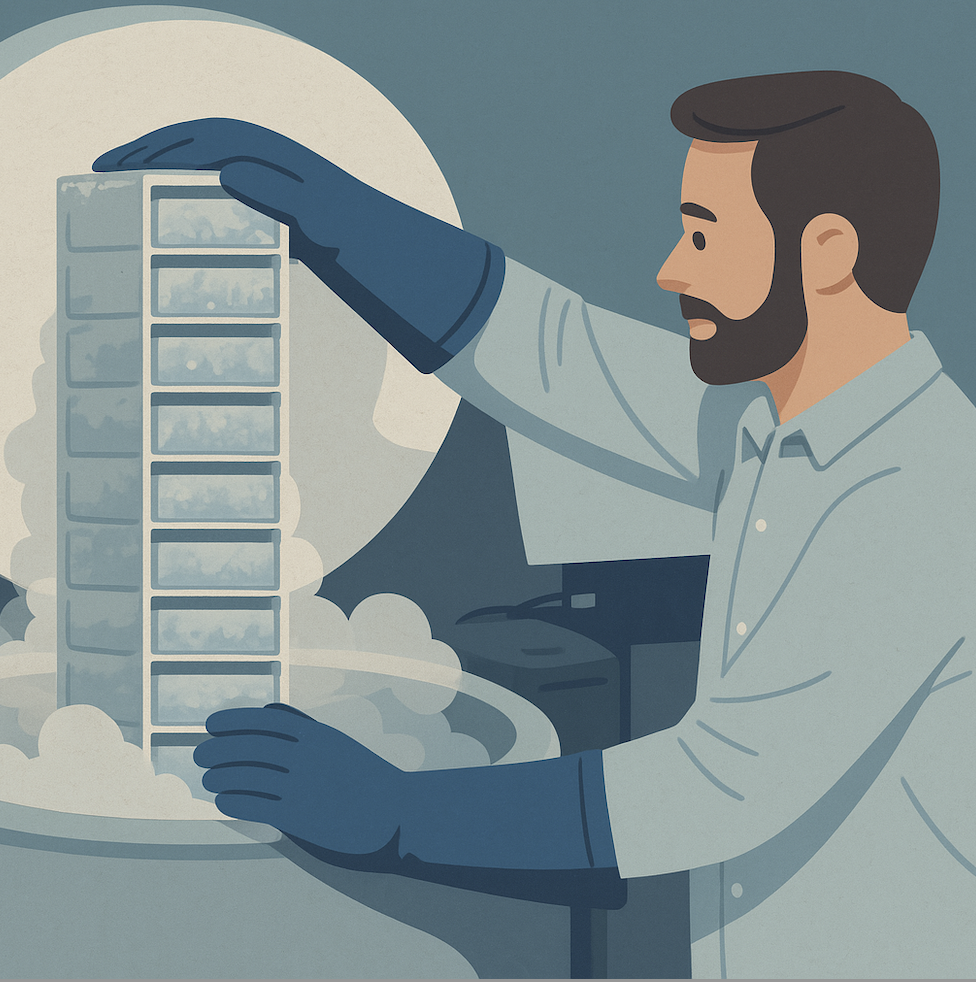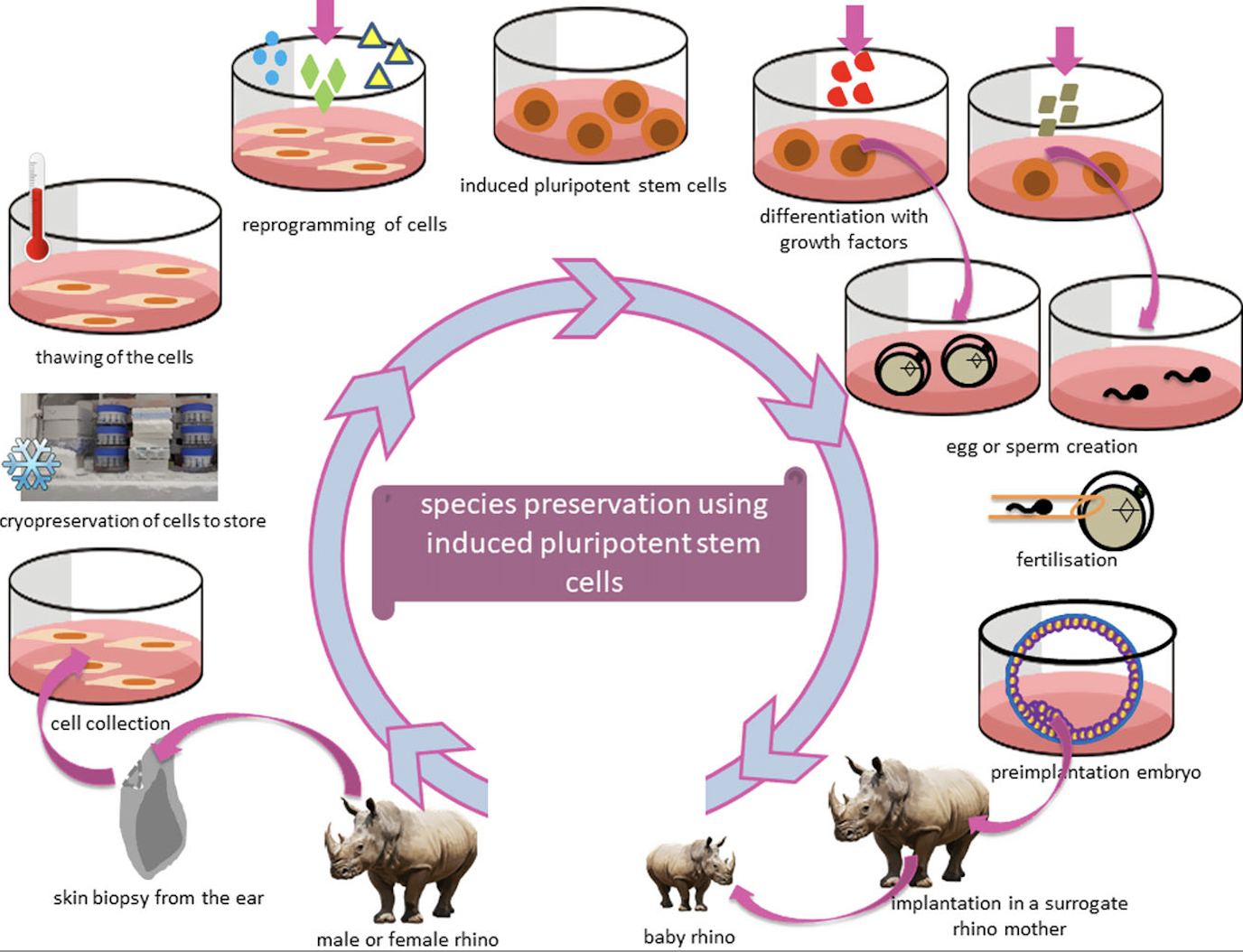As global biodiversity continues to decline, “Frozen Zoos” are emerging as groundbreaking biobanks that capture the genetic essence of endangered wildlife. These ultra-safe repositories store biological materials – such as tissue, sperm, eggs, and embryos – at cryogenic temperatures. By safeguarding genetic diversity, Frozen Zoos hold the potential to restore species, support conservation breeding, and unlock evolutionary insights.
What are Frozen Zoos?

Frozen Zoos are biobanking facilities designed to preserve the genetic material of animal species, typically those threatened or endangered. Samples are archived in liquid nitrogen at –196 °C, maintaining viability over decades or even centuries. This genetic “snapshot” can be used for future breeding programs, genomic research, and, potentially, de-extinction efforts. The rationale is simple: once lost, a species’ genetic code cannot be recreated. By capturing it in time, science retains a lifeline for future restoration.
The 50-Year Legacy: Milestones and Impact
Celebrating over 50 years of operation, Frozen Zoos have evolved into global biodiversity hubs. The pioneering initiative began with the San Diego Zoo’s Frozen Zoo, which now holds samples from rare species like the black-footed ferret and the northern white rhinoceros. Over time, this network has expanded worldwide, becoming a crucial resource for wildlife conservation. Institutions in Europe, Asia, and South America are now contributing samples to joint biorepositories, creating a distributed genetic archive that transcends national borders.
The global reach of Frozen Zoos has proven especially valuable in rapid response to conservation emergencies. When natural disasters or disease outbreaks threaten isolated populations, stored genetic material becomes a critical fallback. For instance, after wild populations of amphibians collapsed due to chytrid fungus, preserved gametes allowed researchers to begin restoration efforts in biosecure environments.
From Cryopreservation to Genomic Discovery
Modern Frozen Zoos combine cryopreservation with advanced genomic tools. Extracted DNA is sequenced to analyze genetic diversity, identify inbreeding risks, and guide breeding programs aimed at boosting population viability. Bioinformatics pipelines help interpret data and track lineage health in real time. This genomic information is also critical for managing founder representation in captive populations, ensuring that genetic bottlenecks do not undermine future resilience.
Furthermore, the integration of epigenomic analysis adds a new layer of insight, revealing how environmental factors may influence gene expression across generations. This allows conservationists to not only preserve genomes but also understand how they respond to stress, climate, or habitat change—a major asset in rewilding scenarios.
Supporting Reproductive Technologies and Breed Restoration

Fertility treatments—like artificial insemination, IVF, and embryo transfer—are increasingly intertwined with Frozen Zoos. For critically endangered animals with few living individuals, genetic rescue through frozen gametes offers a lifeline. For example, material from frozen zoo collections has enabled assisted reproduction in species that remain extinct in the wild. Notable successes include IVF in clouded leopards and artificial insemination in giant pandas using cryopreserved semen from genetically valuable males no longer alive.
In some cases, cloning from frozen somatic cells has been used to reintroduce rare genetic lineages. The birth of an endangered Przewalski’s horse in 2020 from a 40-year-old cell line is a testament to the long-term viability of frozen material and its role in active species recovery.
Global Collaboration: A United Front for Wildlife
These biobanks rely on wide collaboration across zoological institutions, researchers, and conservationists. Shared sample libraries and standardized protocols enhance effectiveness. Joint databases catalog specimen metadata, leading to more informed conservation initiatives worldwide. The International Frozen Ark Consortium and the CryoArks biobank initiative exemplify this collaborative spirit, facilitating global access to genetic resources while aligning with bioethical and legal frameworks.
As global threats like climate change and habitat loss outpace traditional conservation timelines, this level of coordination ensures that irreplaceable genetic information is not lost to fragmentation or institutional silos. Digitization efforts—linking physical samples to rich genomic metadata—further strengthen this interconnected ecosystem.
Innovations on the Horizon
AI-driven sample management, robotics, and machine learning are beginning to optimize retrieval accuracy and sample monitoring in large cryogenic collections. These tools improve traceability, reduce risk of error, and enable researchers to query vast inventories with real-time insight. Digital biobanks, which pair cryopreserved samples with sequenced genomes and phenotypic data, also foster broader collaboration and remote research across institutions and time zones.
Perhaps most significantly, CRISPR and other gene-editing platforms may soon enable the correction of deleterious mutations in endangered populations or the reconstruction of lost genetic traits. This introduces the possibility of not only preserving what exists—but actively rebuilding what was lost. Although controversial, such approaches may prove vital for species whose survival hinges on restoring functional genetic diversity.
Guardians of Genetic Richness
Frozen Zoos function as living libraries, preserving the genetic heritage of wildlife for generations to come. By blending cryogenic preservation with genomic innovation, they empower conservationists to safeguard biodiversity, aid recovery efforts, and explore future possibilities in ecological restoration. They do not replace habitat conservation—but they expand the toolbox available for fighting extinction.
As the global community advances toward more data-driven, adaptive conservation models, Frozen Zoos provide a critical safety net. They ensure that even in the face of ecological collapse, a species’ genetic identity can persist—and potentially return.
